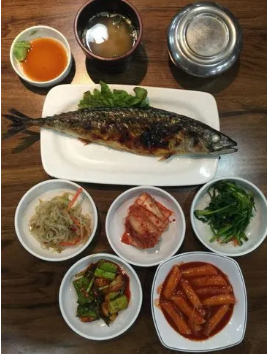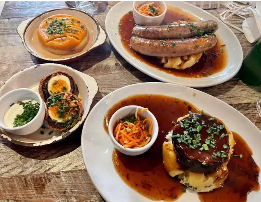Do you know the Korean food concept and customs? Let’s have a look
4 min read
Since The Three Kingdoms Period, Korean people have gradually formed their own unique diet structure and dietary habits. This is closely related to the development of agriculture, especially planting and family breeding. During The Three Kingdoms Period, millet, sorghum, yellow rice, soybeans, barley and rice were widely cultivated. Rice is widely grown in the south. Grain structure determines people’s staple food structure, so the types of staple food has been quite rich. During this period, families generally raised horses, cows, dogs, pigs, chickens, ducks and other domestic animals and poultry. These livestock and poultry provide a rich source of non-staple food. People have also mastered the processing techniques of many non-staple foods, such as extracting oil from soybeans, making soybean paste, and turning fish and meat into dried or paste for long-term preservation.
The staple food of the Goryeo period was mainly rice, among which rice and rice were dominant. As non-staple vegetables are radish cucumber eggplant green onion and so on. Among them, radish is the main. Use radishes for kimchi in winter and sauces in summer. During this period, tofu processing technology was also invented, and students learned to make rice, oil tea, wine, cake, rice, red bean congee and other foods. Among them, Mimahua is the most famous. Mimahua is a kind of food made from beef, chicken and pork cooked and processed in the sun. During the Li Dynasty, with the development of agriculture, rice planting was very popular, and people began to use rice as raw material to process a variety of special food.
From the 17th century to the early 19th century, chili, potato, pumpkin, corn, cabbage and so on began to be planted everywhere. With the planting of these vegetables and food crops, the variety of people’s diet has been enriched. It was also during this period that Koreans began to enjoy eating hot peppers. The daily staple food of this period included various kinds of rice, porridge and soup, while non-staple food included soybean paste, kimchi and fish paste. In addition, during the festival, people also make a variety of special food suitable for the characteristics of the festival, such as cake, noodles, barbecued meat (fish), stew, medicine rice, rice and so on. Fairy furnace (hot pot) also became popular. People also learned to make various kinds of sweets and drinks, such as wheat tooth candy, oil honey fruit, flower tea (a kind of drink), persimmon juice, etc.
With the development of copper smelting technology, people began to use copper tableware, instead of the original wooden and ceramic tableware. These eating and living habits survived almost untouched until the early 20th century, and many survive to this day. Therefore, it can be said that this period is the formation of Korean traditional life customs. There are special meals for major holidays. For example, eating glutinous rice, mugwort cake at the beginning of the first month; Dragon Boat Festival eat mountain burdock leaf cake; Double Ninth Festival drink chrysanthemum wine; Winter solstice to eat red bean porridge. During the Goryeo period, there was a wide variety of utensils for eating, including bronze, pottery, porcelain, and wood, and gold and silver for the privileged class. At that time, many meals were small tables, only in the palace or state banquet with a higher table. In modern society, with the continuous development of South Korea’s economy and the continuous improvement of people’s living standards, diet and life customs have also changed. Non-staple foods have also been refined, but the diet and the way it is eaten has remained much the same.
Characteristics of dietary lifestyle In the long process of its formation and development, the Korean diet and life style has formed its own inherent national characteristics. In terms of diet structure, rice is the main staple food, and even other grains are processed into dry rice. In addition, soup is a must on the table. Among the non-food, Korean people especially like to eat wild vegetables, such as platycodon, bracken, water celery, sand ginseng, tea, dandelion, tabloids and so on. Among meat and fish, beef, dog meat and pollack are the main.
In addition, South Korean people have the habit of drinking cold water, rarely like the Chinese people drink hot water, tea. In terms of food consumption, Korean people eat fish, meat, vegetables, relatively light, with cold mix and raw mix as the main processing methods, and in each dish, pepper is an essential seasoning. South Koreans, by contrast, are less keen on stir-fries and stews. Koreans in the daily diet, staple food to rice, supplemented by a variety of grains; Non-staple food is mainly soups, pickles and sauces, including some stir-fried vegetables.
In the course of its long history, Korean people have formed a rich and colorful food culture. Its food habits have typical national characteristics. Although modern South Korea is influenced by Western culture and has absorbed a large amount of Western lifestyle, South Korea is a country with great respect for tradition, and its traditional diet and lifestyle have been well inherited and developed up to now.






